When it comes to the solar system’s planets, the common focus is on their radius and mass. This article aims to provide a clearer understanding of their size by comparing them to the Earth’s mass and volume.
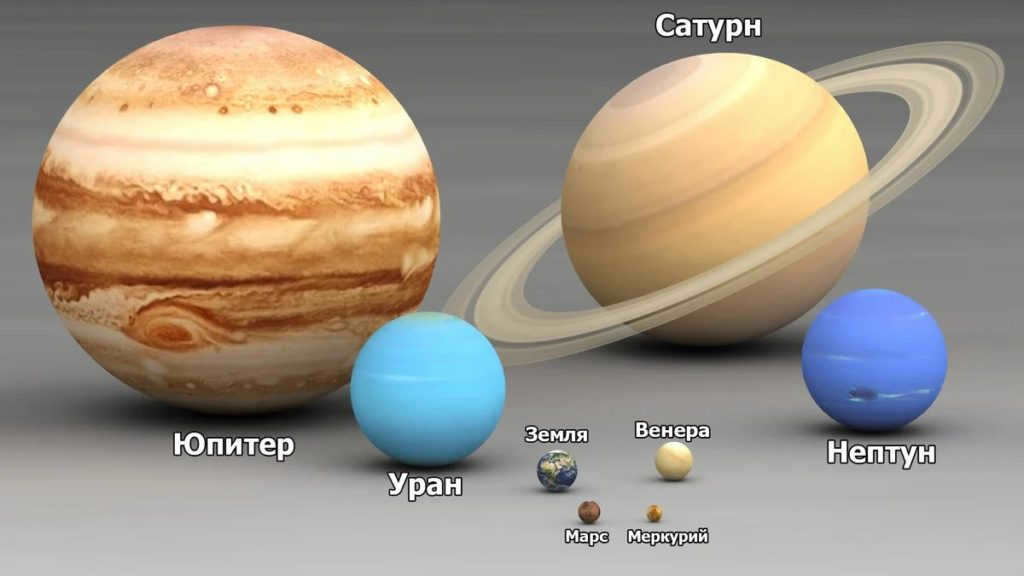
Table of fundamental characteristics of the planets in the solar system
The planets in the solar system originated at roughly the same time around 4.5-4.55 billion years ago, approximately 100 million years after the Sun.
By differentiating diameter and density, astronomers have classified the 8 planets in the solar system into gas giants and the Earth group. One notable difference in the Earth group is their slower rotation rate around their own axis (Venus, for example, has a day lasting 243 Earth days). However, they have a faster revolution around the Sun due to their proximity to the star. Gas giants, on the other hand, are significantly larger in size and typically lack a solid surface.
When it comes to understanding the size of planets, it’s not just about their radii and masses. It’s also important to consider their distance from the Sun and their density. While density might not seem like a significant factor in determining a planet’s size, it’s actually a crucial characteristic to take into account.
The planets of the Solar System are arranged below in ascending order of magnitude.
Mercury
The smallest planet (a bit larger than the Moon, but smaller than Saturn and Jupiter’s moons, Titan and Ganymede). Mercury has a very thin atmosphere. Being the closest planet to the Sun, it experiences the greatest difference in daily temperatures: +430 o C during the day, -190 o C at night.
The average radius of Mercury is approximately 2320 km, which is equivalent to 0.364 times the diameter of Earth. On the other hand, the Moon has an average radius of about 1737 km, which is 0.273 times the diameter of Earth. One of the factors that affects the size of Mercury is its high density index. In comparison to Earth, Mercury has a slightly lower density, with a value of 5.43 g/cm3 for Mercury and 5.51 g/cm3 for Earth. The reason behind this high density can be attributed to the iron core of Mercury, which comprises 83% of its volume. However, the exact explanation for the size of this core remains a scientific mystery.
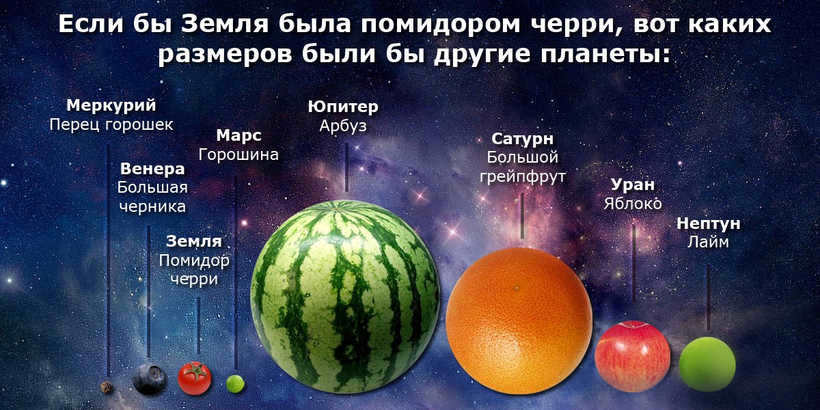
Due to its close proximity to the Sun, the duration of a year on Mercury is significantly shorter compared to Earth, lasting only 88 Earth days. Consequently, this close proximity to Earth also causes this diminutive planet to be one of the most luminous objects in the night sky.
Mercury is acknowledged as the tiniest planet within our solar system and possesses some of the most minuscule measurements known to astronomers. Its diameter is merely 20% larger than that of Kepler-37 b, the smallest planet currently identified in the universe.
Mars
Mars is a fascinating planet that has captivated the imagination of science fiction fans who speculate about the possibility of intelligent life on its surface. However, astronomers are also intrigued by Mars for other reasons. Compared to Earth, Mars has a smaller radius, measuring 3390 km, and a significantly lower mass of 0.642 *10 24 kg. In fact, Mars is only 9.3 times less massive than Earth. The acceleration of free fall at the equator on Mars is approximately 38% of Earth’s, which is comparable to the gravitational pull experienced on Mercury. Despite its smaller size, Mars is nearly twice as heavy as Mercury.
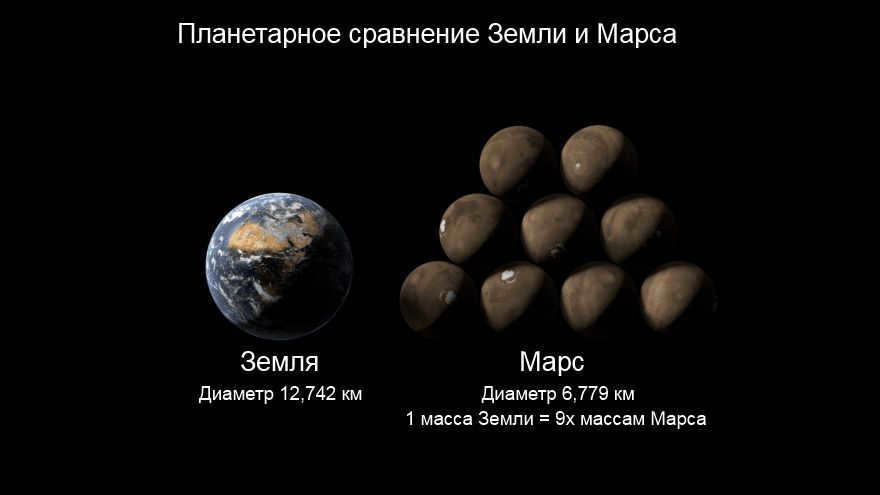
What sets Mercury, Earth, and Venus apart from their neighboring planets in the solar system is their significantly higher density: Mercury has a density of 5.43 g/cm3, Earth has a density of 5.51 g/cm3, and Venus has a density of 5.24 g/cm3, whereas Mars has a density of 3.93 g/cm3.
Mars boasts the tallest mountain in the entire solar system, Mount Olympus, which reaches a staggering height of 27 kilometers.
Venus
Experts consider Venus to be Earth’s younger sibling (sometimes referred to as a twin), as it shares many similarities: it has a mass of 4.868 * 10^24 kg (0.82 times that of Earth), a volume of 92.84 * 10^10 km^3 (0.86 times that of Earth), and a density of 5.24 g/cm^3 (0.95 times that of Earth). However, the surface pressure on Venus is equivalent to the pressure 900 meters below the surface of Earth, making it 92 times higher than Earth’s surface pressure.
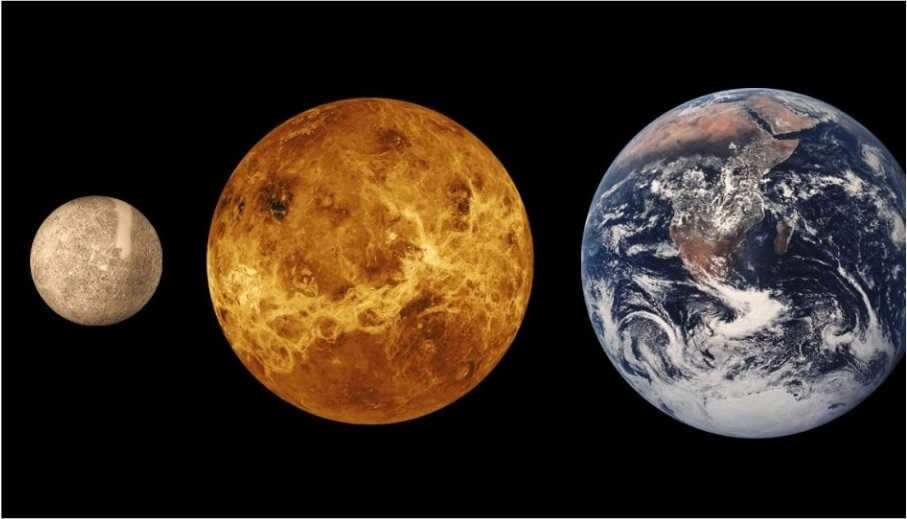
Venus is the planet that is closest to Earth, with a maximum distance of 42 million kilometers. Another notable feature of Venus is its orbital period around the Sun, which is 225 days, and its rotational period around its own axis, which is 243 days. This means that a year on Venus is almost equal to a day. Furthermore, Venus is unique among the planets in the solar system in that it rotates in a clockwise direction (east-west). It also has a very weak magnetic field. The surface temperatures on Venus can reach an incredibly high temperature of +475 degrees Celsius.
It is a little-known fact that our planet has the highest density in the entire solar system.
The Earth’s Dimensions
In the late 3rd century B.C., the Greek mathematician Eratosthenes became the first person to calculate the size of the Earth. Using the already-known latitudes and meridians, he measured the length of the Earth’s arc at 1 degree. This allowed him to determine the circumference, diameter, and radius of the globe.
Eratosthenes’ method for determining the radius of the Earth
In order to calculate the Earth’s radius, Eratosthenes used the difference in geographic latitudes between the cities of Alexandria and Siena. He determined the length of the arc in degrees by subtracting the latitude of Alexandria (φA) from the latitude of Siena (φB). At noon in Siena, the Sun was directly overhead, with an altitude of hA=90 o . Eratosthenes then measured the height of the Sun in Alexandria, which was 7.2 o .
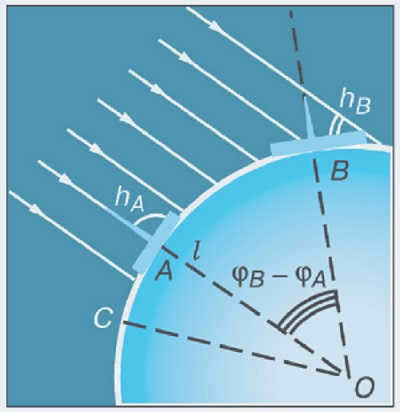
Given that the distance between the cities was 5000 stadia or 800 km (1 stadia was equal to 160 m), determining the length of the Earth’s circumference Lз was a simple task: Lз/5000=360/7.2 = 250,000 stadia = 40,000 km, which closely matches the modern value (40075.7 km). To calculate the Earth’s radius Rз, all that was needed was to apply the following formula:
Determining the shape of the Earth
In the 18th century, the French Academy of Sciences organized two expeditions to conduct a comparative experiment. One expedition performed measurements in Peru, while the other conducted measurements in northern Finland. The results showed that the length of one degree of longitude in the northern region was greater than in the equatorial area. Furthermore, as they traveled further north, the length of the arc increased. This phenomenon could be explained by the fact that the Earth is flattened at the poles. The radius from the North Pole to the center of the Earth is 21 kilometers shorter than the equatorial radius.
For many years, it was believed that the Earth was a flattened sphere. However, in the 20th century, it was discovered that the equator is also slightly flattened, although to a much lesser extent than the poles. Therefore, the shape of the Earth is not perfectly spherical, but rather ellipsoidal in nature.
Calculating the Mass of the Earth: A Historical Perspective
The determination of the Earth’s mass was made possible by the groundbreaking discoveries of Sir Isaac Newton, who formulated two fundamental laws – the law of universal gravitation and the law of force. Utilizing these principles, scientists were able to deduce the mass of our planet:
To calculate the acceleration of free fall (represented by g), a balloon (acting as a barometer) was dropped from a considerable height. By measuring the time it took for the balloon to fall and the height of the tower, the value of g was determined to be 9.8 m/s2. The radius of the Earth (Rz) was initially measured by the Greek mathematician Eratosthenes over two millennia ago and is known to be approximately 6371 km. The gravitational constant, an essential factor in the calculations, was determined by measuring the gravitational force between two objects with known masses. By substituting these values into the formula, scientists were able to obtain an estimate of the Earth’s mass:
The mass of the Earth was determined through a groundbreaking neutrino experiment conducted by Spanish scientists at the South Pole. They successfully captured a neutrino emitted by the Sun while it was positioned at the North Pole. By measuring the velocity of the neutrino and analyzing the density of the medium it traveled through, they were able to accurately calculate the Earth’s mass, which is approximately 5.972*10^24 kg.
Similarly, the masses of other planets were determined by observing the orbits of these planets and their satellites, as well as the gravitational forces acting upon them.
Neptune, being the farthest planet from the Sun in our solar system, was discovered later than the other planets. It couldn’t be seen with the naked eye, but its presence was inferred from its gravitational effects on the orbit of Uranus. The anomalies in Uranus’s orbit could only be explained by the existence of another large celestial body, and this was confirmed in the mid-19th century.
The size of Neptune was determined in the late 1960s, but due to the planet’s distance, there were errors in the measurements. It was found to have a mass 17.15 times greater than that of the Earth, not the originally thought 17.27 – a total of 102.4 * 10 24 kg.
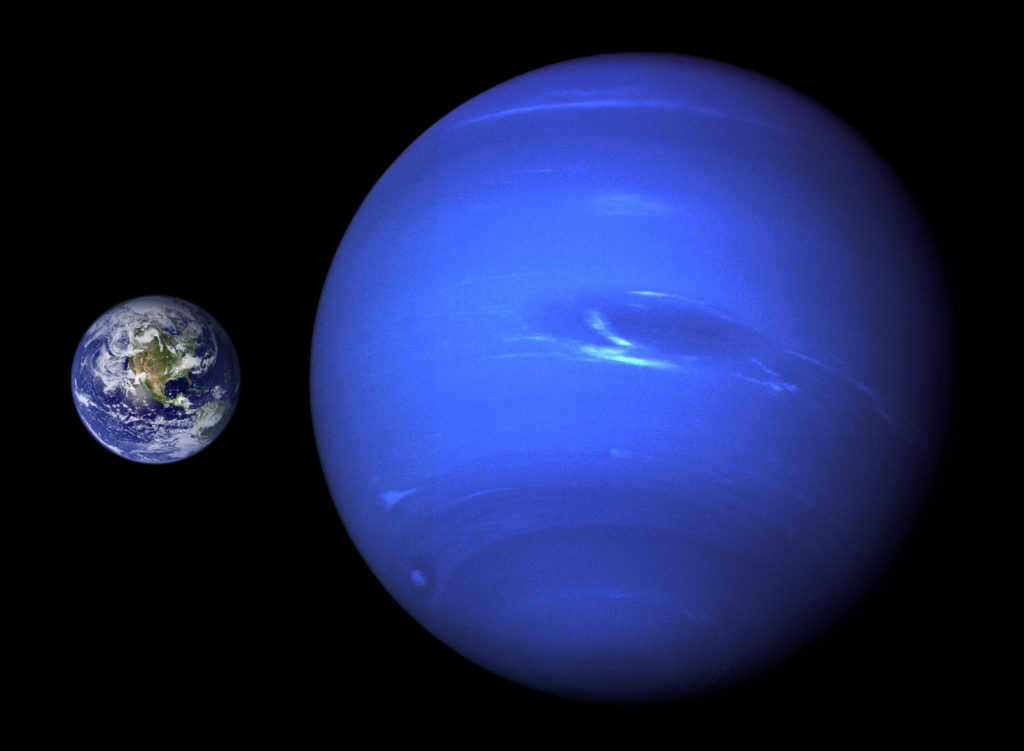
The planet’s size is 3.89 times that of Earth, equivalent to 24,622 kilometers in radius.
One remarkable characteristic of Neptune is its categorization as an ice giant, similar to Uranus. These planets have a higher proportion of icy materials and fewer volatile gases. Neptune has the highest density among all the giant planets, measuring 1.64 g/cm3.
Uranus
Uranus was the inaugural planet to be spotted using a telescope, although there are instances when it can be observed without any optical aid. Similar to Neptune, Uranus does not possess a core comprised of metallic hydrogen (akin to Jupiter and Saturn), instead it harbors a substantial quantity of high-temperature ice.
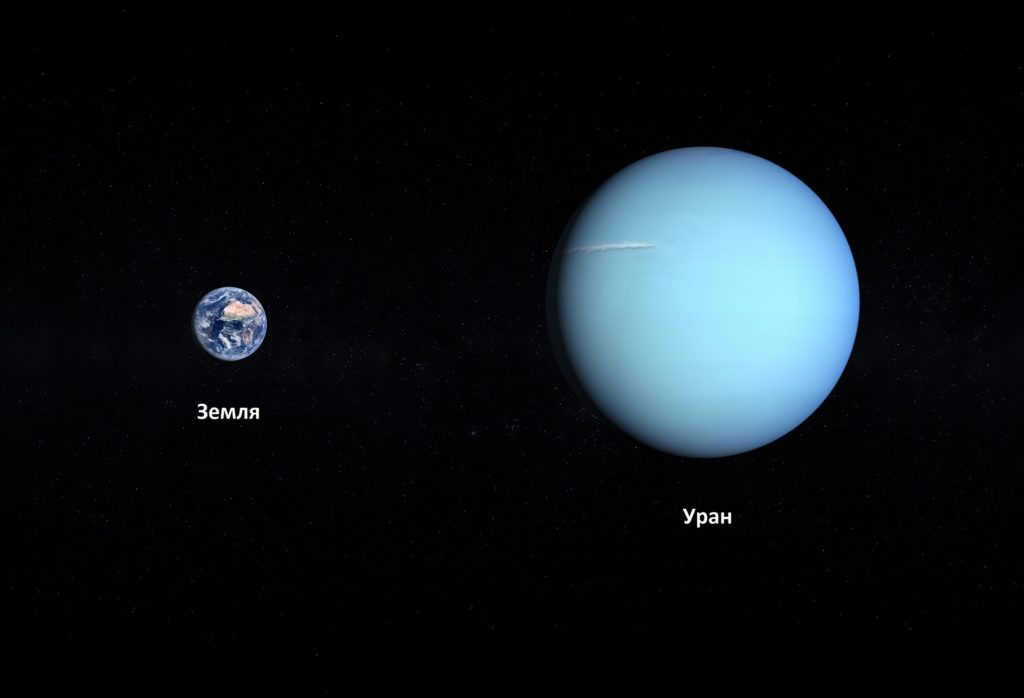
Uranus has a radius of 25362 km. It is the smallest in terms of mass among all giant planets, with a weight of 86.8 * 10 24 kg. When it comes to volume, it is only slightly larger than Neptune, measuring at 6834 * 10 10 10 km 3. In addition, Uranus possesses the lowest amount of internal heat compared to other giant planets.
Saturn, the sixth planet from the Sun, is known for its impressive rings made of ice and dust that span a vast area. Despite being mainly composed of gas and lacking a solid surface, it is the most compressed planet at its poles. Its equatorial radius measures 60.3 thousand kilometers, while the polar radius is slightly shorter at 54.4 thousand kilometers.
One of Saturn’s notable characteristics is its incredibly low density, measuring only 0.69 g/cm3.
What sets Saturn apart from the other planets in the Solar System is its weight. In fact, it is the only planet that is lighter than water. If placed in a large enough ocean, Saturn would actually float. Despite its similar equatorial radius to Jupiter, Saturn’s mass is significantly smaller, measuring at 568.3 * 10^24 kg, which is 3.34 times lighter.
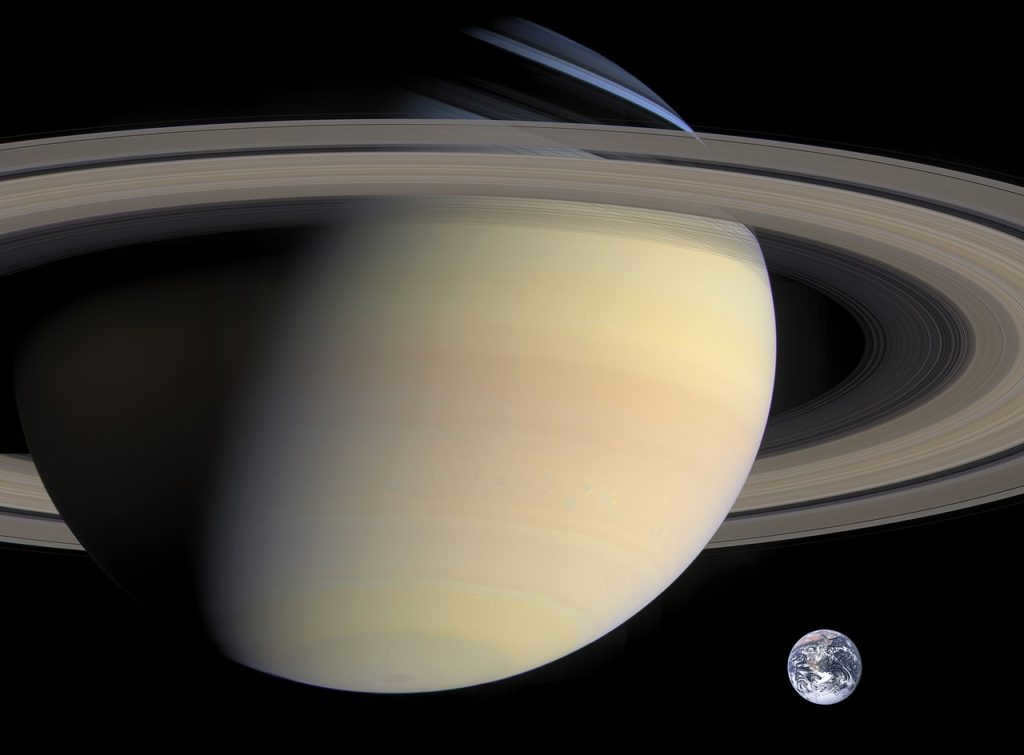
One of the distinctive features of Saturn compared to the rest of the planets is its faster rotation speed around its own axis. It rotates at a speed of 9.87 km/s, which is higher than its orbital speed around the Sun, which is 9.69 km/s.
Jupiter
Jupiter has a mass of 1898.1*10 24 kg, which is twice the combined mass of all the other planets in the solar system. The core of this giant planet weighs as much as 10 Earth masses.
In addition, Jupiter holds the title of being the largest planet in terms of size, with a radius of 69911 km.
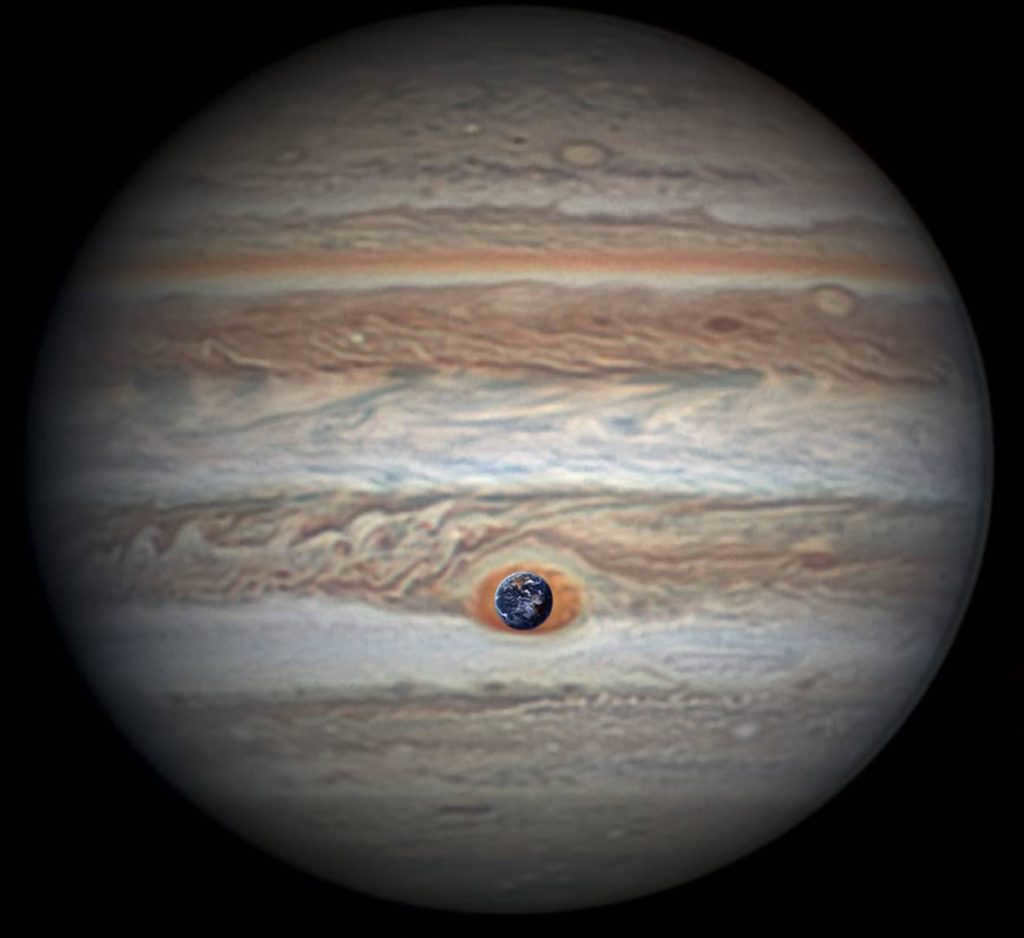
Among all the celestial bodies in the solar system, Jupiter possesses the most intense gravitational pull near its surface, with an acceleration of 24.6 m/s2. When compared to Earth, the weight of an individual on Jupiter is significantly higher, measuring 2.36 times more.
The formation of the solar system commenced approximately 4.6 billion years ago. In the midst of a cloud comprised of dust and gas, a star began to take shape, subsequently giving rise to additional celestial entities around it. The configuration of our planetary system can be categorized into two distinct regions: the inner and outer realms. The inner region encompasses four planets akin to our own Earth, as well as the asteroid belt, while the outer region comprises four gas giants and a variety of other celestial bodies.
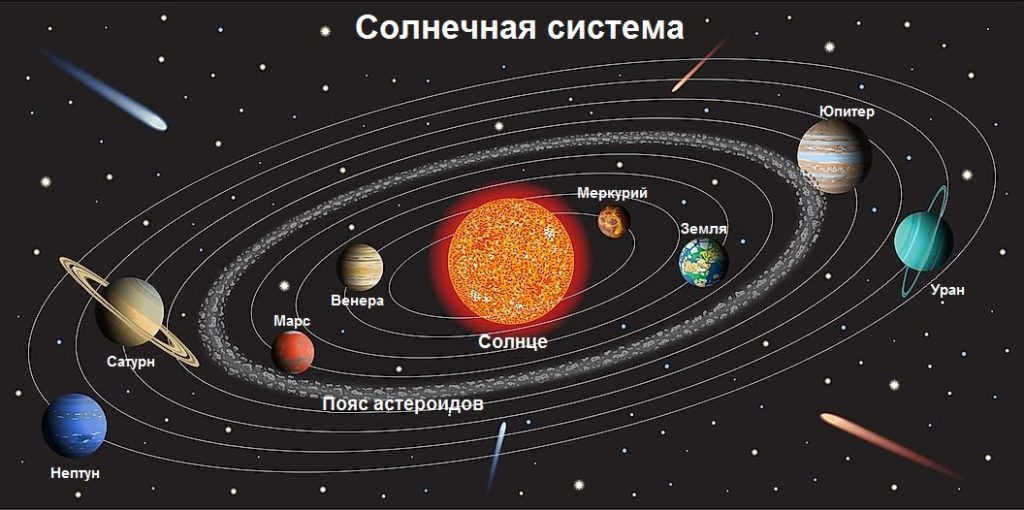
The Origin and Development of the Solar System
The solar system has existed for around 4.6 billion years. The birth of the Sun in the vastness of outer space was made possible by the sudden compression of a cloud composed of fragments of asteroids, dust, small particles, and gas. It is believed that the original size of this cloud was equivalent to several light-years, making it the precursor to numerous stars.
Due to the force of gravity, the cloud underwent compression, resulting in its size decreasing and its rate of rotation increasing. The temperature within the central region experienced a continuous rise, while at the outer edges, it decreased. The combination of constant motion along the axis, temperature variations, and gravitational compression brought about alterations in velocity and direction, ultimately causing the gas to condense and form a denser region. The end result was the formation of a protoplanetary disk, approximately 200 astronomical units in diameter, consisting of gas and dust, with a hot protostar situated at its center.
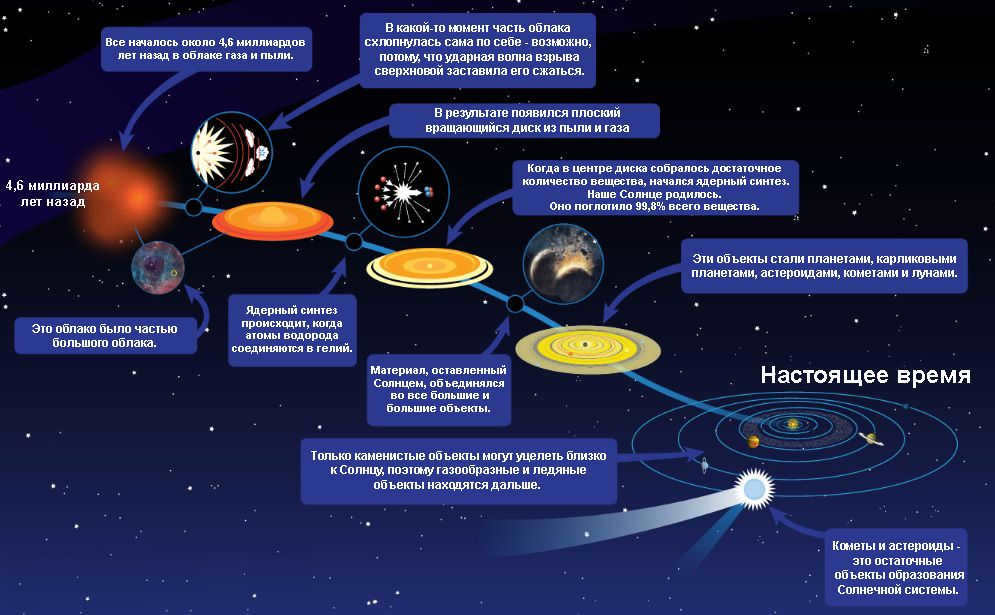
It is widely accepted that during this phase of its development, the Sun exhibited similar characteristics to those of T Taurus-type stars. Observations have revealed that stars of this nature often possess formations that have the potential to give rise to planets in the future.
Over a span of 60 million years, the hydrogen density in the central region of the star increased, triggering the onset of thermonuclear reactions. Eventually, the temperature, gravitational pressure, and density of the core reached a stable state, establishing hydrostatic equilibrium. This phase marked the culmination of the star’s formation.
The Sun’s hydrogen reserves slowly deplete over time, causing the gradual loss of the energy that sustains and stabilizes its core. As a result, the star begins to shrink, leading to a gradual increase in brightness of approximately 10% every 1.1 billion years.
Scientists predict that in approximately 6.5 to 7 billion years, the hydrogen within the Sun’s core will be completely converted into helium. At this stage, the Sun will transform into a subgiant, and after another 500 million years, its outer layers will begin to expand. This expansion will trigger another phase of transformation, and the Sun will evolve into a red giant.
According to scientists’ predictions, once the volume of the Sun expands, it will engulf all objects in its vicinity, including the closest planets like Mercury and Venus. It is possible that Earth may manage to avoid being engulfed, but it will undoubtedly experience the catastrophic consequences and transform into a lifeless planet.

Eventually, due to unstable thermal reactions, the Sun’s outer layers will disperse and create a fresh planetary nebula. The Sun will then leave behind a compact core, which will transform into a white dwarf followed by a black dwarf.
Structure of the Solar System
The solar system consists of various celestial bodies:
- The planets and their moons;
- the wandering comets;
- the asteroid belts;
- meteors;
- centaurs;
- nebulae;
- dwarf planets.
The question of “how many planets are there in the solar system?” can be confusing for some people. This confusion stems from the reclassification of Pluto as a dwarf planet in 2006. Currently, there are 8 planets in the solar system, which orbit the Sun, the only star in our system.
The planets of the solar system are arranged in the following order:
Sun
The Sun is classified as a G2 class star, specifically a yellow dwarf star. During its early formation, the Sun’s luminosity was approximately 60% of its current level. In the Hertzsprung-Russell diagram, the Sun is positioned relatively near the center. However, over time, it is expected to increase in brightness. According to scientific projections, in 100 million years, the Sun will shift away from the center of the diagram and move towards the upper left quadrant.
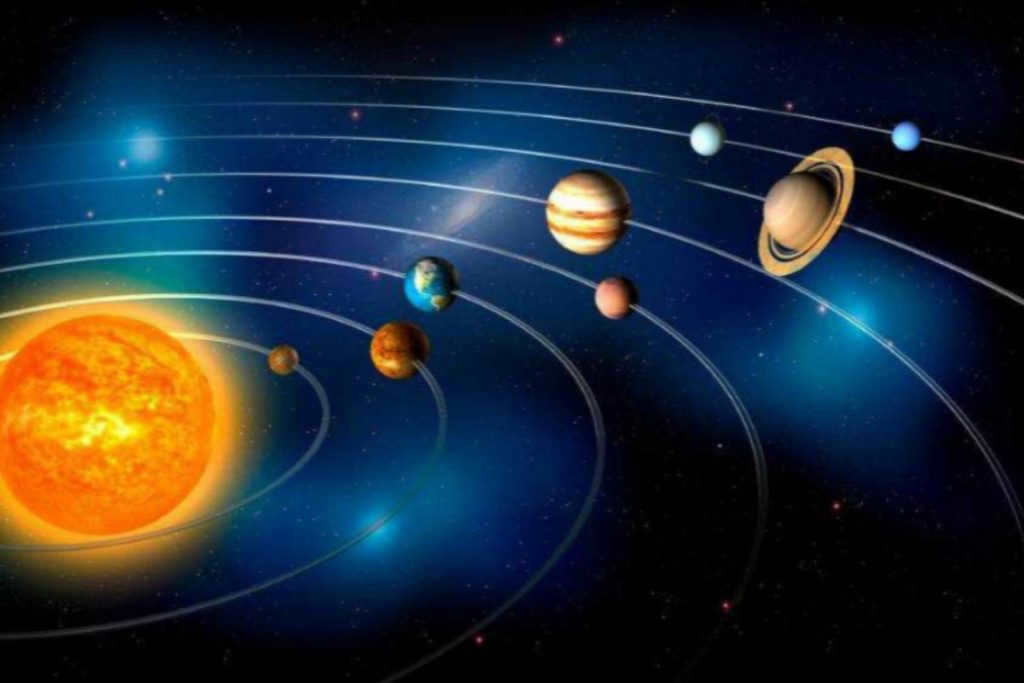
Today, let’s discuss the number of planets present in our solar system: is it 8 or 9, or perhaps even more?
First and foremost, let us define what precisely constitutes the solar system. The solar system refers to a gathering of celestial entities (planets) that revolve around a central star, which is none other than the Sun.
Now you might be wondering, what in the world is a planet? Well, planets are frigid celestial bodies that orbit a central star. They lack the ability to emit their own light, instead, they merely reflect light originating from the stars.
As mentioned earlier, the Sun is indeed a star. Stars are luminous, colossal, and at times even gargantuan celestial entities that emit their own light.
Now that we have covered the fundamental ideas, let’s explore the number of planets in our solar system.
How many planets exist in our solar system: 8 or 9?
There are a total of 8 planets in our solar system: Mercury, Venus, Earth, Mars, Jupiter, Saturn, Uranus, and Neptune.
However, until 2006, there were 9 planets in the solar system. Where did the 9th planet go? It still exists to this day, but in 2006, the definition and criteria for the term “planet” were revised, leading to the reclassification of Pluto as a small celestial body within the solar system.

There are two main groups of planets in our solar system based on their physical properties: terrestrial planets and giant planets. The terrestrial group consists of the first four planets closest to the Sun – Mercury, Venus, Earth, and Mars. These planets share some characteristics. They are relatively small in size and mass, have similar chemical compositions, and are dense. Some of them have no or few satellites, like Earth and Mars.
The giant planets, on the other hand, are Jupiter, Saturn, Uranus, and Neptune. These planets are massive and considerably larger in size. They are primarily composed of gases and ice. Additionally, they have thin rings surrounding them and numerous satellites.
Now, let’s explore each planet in more detail.
Mercury
Mercury, the closest planet to the Sun, is a fascinating celestial body. It is known for its unique characteristics and intriguing features.
Mercury, also known as the Swift Planet, orbits the Sun at a distance of approximately 36 million miles. Its proximity to the Sun makes it one of the hottest planets in our solar system, with surface temperatures reaching up to 800 degrees Fahrenheit.
One of the most interesting aspects of Mercury is its extreme temperature variations. During the day, the side facing the Sun experiences scorching heat, while the side facing away from the Sun is exposed to freezing temperatures. This drastic difference in temperature creates a challenging environment for any potential exploration.
Mercury is also known for its lack of atmosphere. Unlike Earth and other planets, Mercury has a very thin atmosphere that is unable to retain heat. As a result, the planet experiences extreme temperature fluctuations between day and night.
Another intriguing feature of Mercury is its surface. The planet is covered in craters and has a heavily pockmarked appearance. These craters were formed by the impact of asteroids and comets over billions of years.
Despite its close proximity to the Sun, Mercury is not the hottest planet in our solar system. That title goes to Venus, which has a thick atmosphere that traps heat and creates a greenhouse effect.
In conclusion, Mercury is a unique and captivating planet. Its proximity to the Sun, extreme temperature variations, lack of atmosphere, and crater-covered surface make it a fascinating subject of study for astronomers and scientists.
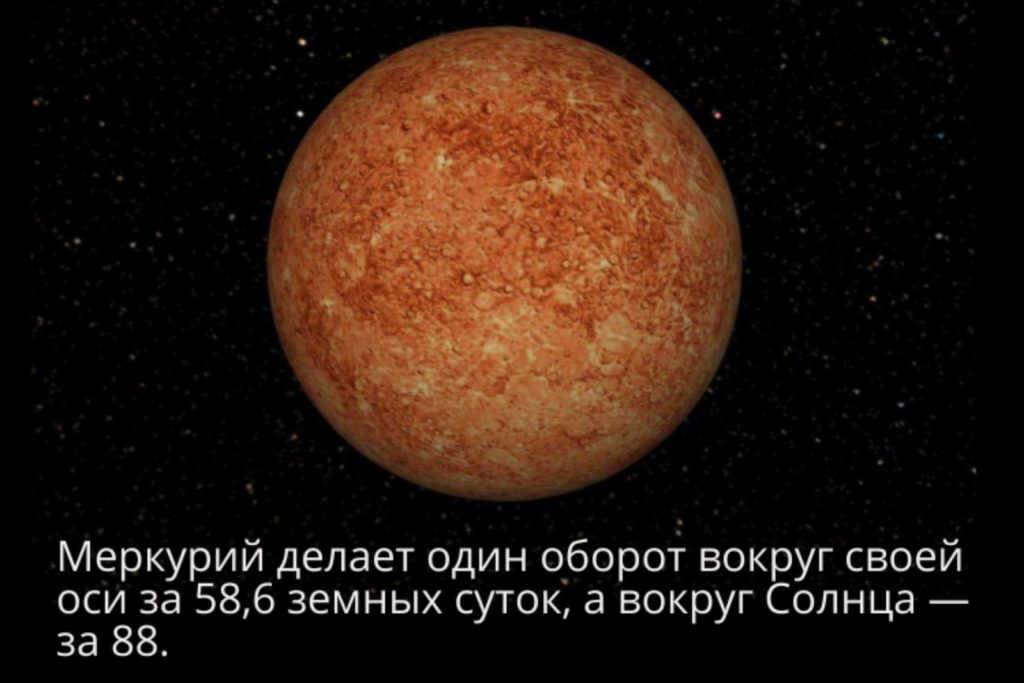
Mercury is the planet that is closest to the Sun, with a distance of 57.9 million km. It is also the smallest planet in our solar system, with a diameter of 4879 km and a mass of 0.055 Earth mass. The surface of Mercury is similar to that of the Moon, with many deep craters. Temperatures on Mercury’s surface can range from -180 °C at night to +430 °C during the day. Some scientists believe that Mercury does not have a significant atmosphere, as it is very rarefied.
It is important to note that it is dangerous to look at Mercury through a telescope without special filters, as it can harm your eyesight.
Venus
Venus is the second planet from the Sun, orbiting it every 224.7 Earth days. It has the longest rotation period (243 Earth days) of any planet in the Solar System and rotates in the opposite direction to most other planets. Venus has a thick atmosphere composed mainly of carbon dioxide, with clouds of sulfuric acid droplets. The atmospheric pressure at the planet’s surface is about 92 times the sea level pressure of Earth, or roughly the pressure at a depth of 1 kilometer in Earth’s oceans. Venus is sometimes called Earth’s “sister planet” due to their similar size, mass, proximity to the Sun, and bulk composition. It is radically different from Earth in other respects. It has the densest atmosphere of the four terrestrial planets, consisting of more than 96% carbon dioxide. The Venusian surface was a subject of speculation until some of its secrets were revealed by planetary science in the 20th century. It is believed to have had oceans in the past, but these would have vaporized as the temperature rose due to a runaway greenhouse effect. The water has most likely photodissociated, and the free hydrogen has been swept into interplanetary space by the solar wind because of the lack of a planetary magnetic field. Venus’s surface is a dry desertscape interspersed with slab-like rocks and is periodically resurfaced by volcanism.
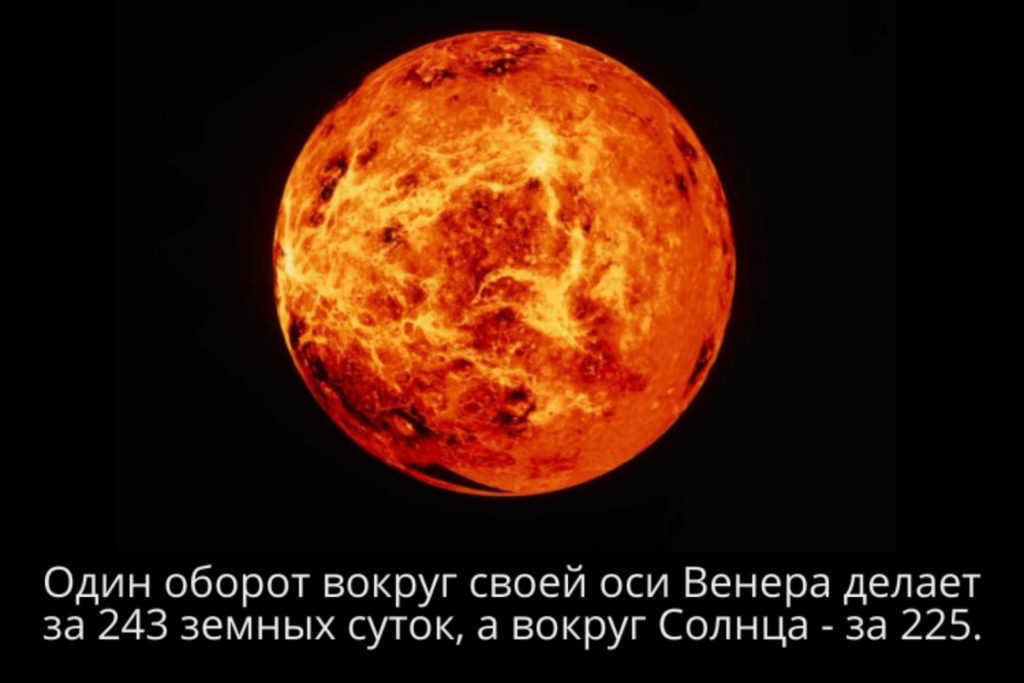
Venus is the second planet from the Sun, located at a distance of 108.2 million kilometers. It is a planet similar in size to Earth, with a diameter of 12,104 km and a mass of 0.82 times that of Earth. The surface of Venus is covered with a thick layer of clouds made of sulfuric acid. These clouds allow light to pass through but trap heat, resulting in surface temperatures that range from +460-470 degrees Celsius. The atmospheric pressure on Venus is 92 times higher than on Earth. While there is no water on the planet’s surface, there is some water vapor present in the lower layers of the atmosphere. Winds blow continuously at altitudes of 50-70 km from the surface.
Planet Earth
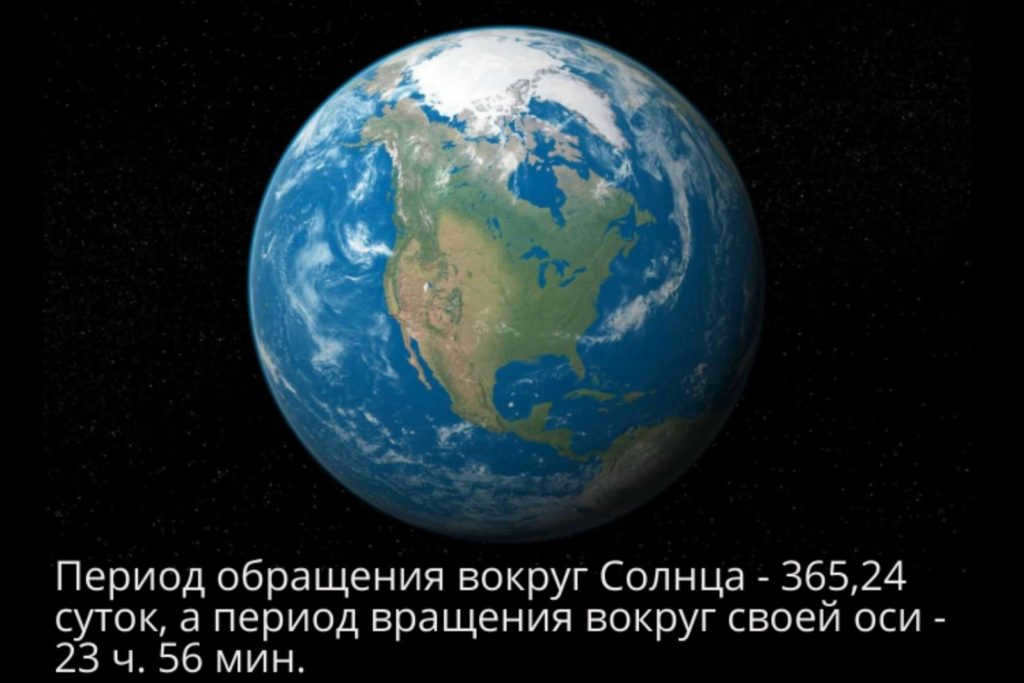
The third planet in our solar system is Earth, which is situated at a distance of 149.6 million kilometers from the Sun. It has a diameter of 12,756 kilometers and a mass of 5.98×10²⁴ kilograms. The temperature on Earth’s surface can range from -89 to +58 degrees Celsius. The presence of water and atmosphere on our planet allows for the existence of life. To this day, no other place in the entire Universe has displayed any indications of life.
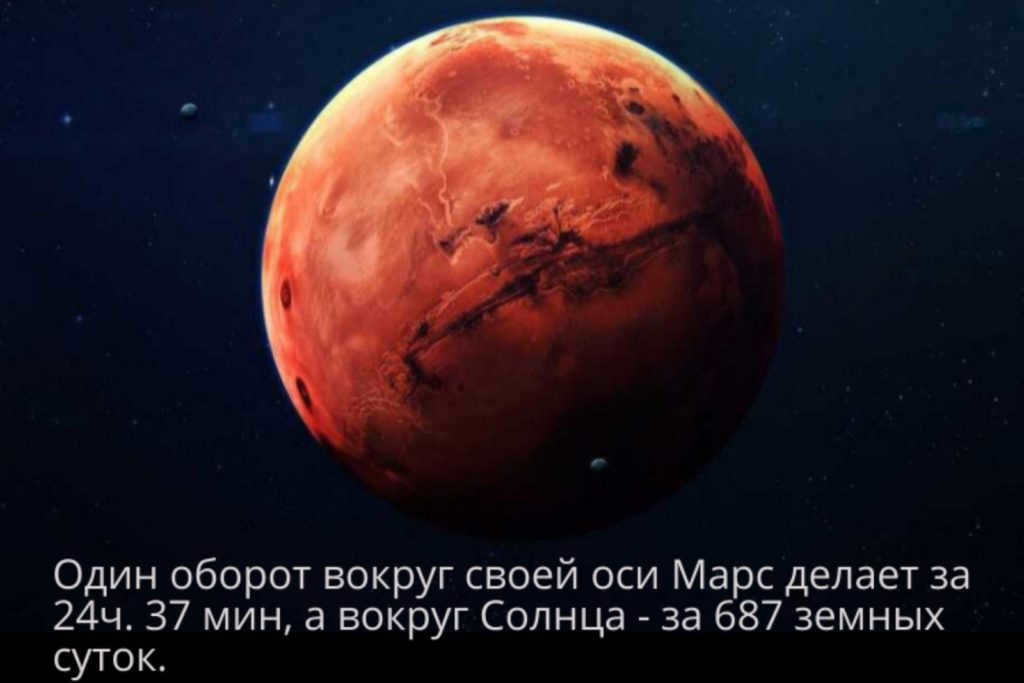
Mars, the fourth planet in our solar system, is situated approximately 227.9 million kilometers away from the Sun. This relatively small celestial body is composed mainly of rock, with a diameter measuring 6794 km and a mass equivalent to 0.107 times that of Earth. The surface of Mars is characterized by a high concentration of iron oxide, resulting in the distinctive red hue of the soil and dust present in its atmosphere. In addition to its unique geological features, Mars is also home to two small natural satellites, known as Deimos and Phobos.
The surface temperature of Mars varies significantly, ranging from a frigid -130 °C to a relatively mild +17 °C. The planet is known for its numerous volcanoes, with Mount Olympus being the highest volcano in the entire solar system, reaching a staggering height of 25 km.
Jupiter
can be rephrased as
The largest planet in our solar system is Jupiter
.
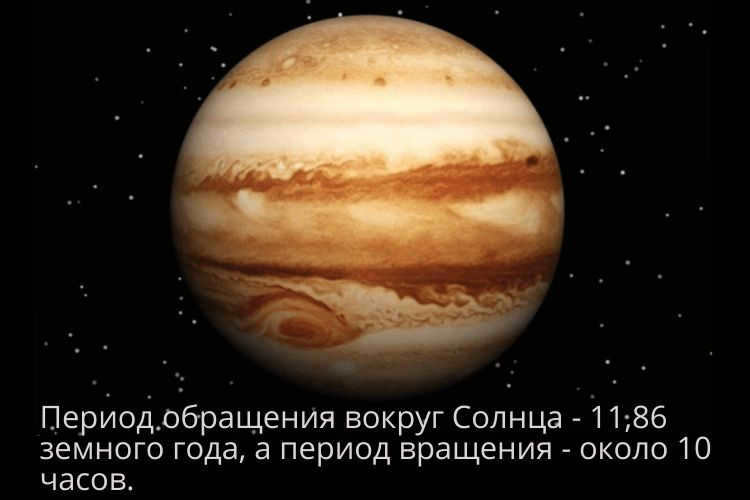
Jupiter, the fifth planet from the Sun, is the largest planet in our Solar System. It has a diameter of 142,984 km and a mass of 318 Earth masses. Composed mainly of hydrogen and helium gases, Jupiter also has a set of rings made up of small dust particles. These rings can only be observed from Earth using powerful telescopes. The surface temperature of Jupiter is a chilly -143.15 °C.
Saturn is a unique planet in our solar system.
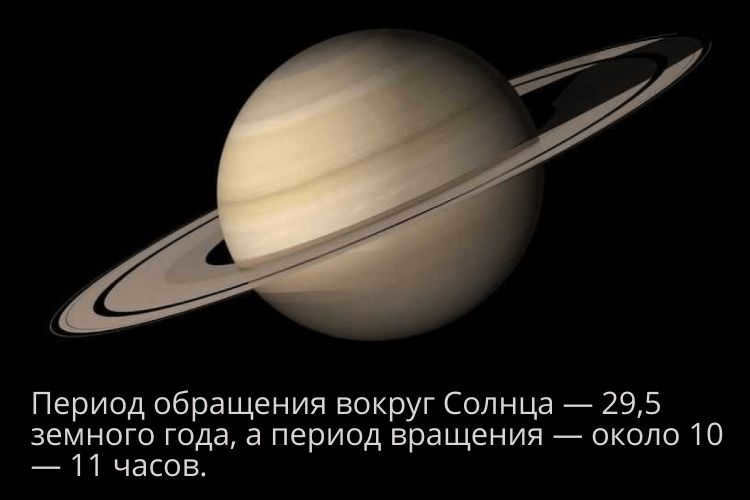
Saturn, the sixth celestial body from the Sun, is located at a distance of 1,430 million kilometers. It holds the title of being the second largest planet in our Solar System, boasting a diameter of 120,536 kilometers and a mass equal to 95 times that of Earth. Similar to its neighboring planet Jupiter, Saturn is primarily composed of gases and is believed to possess a solid core. With a surface temperature of -180 degrees Celsius, it can be considered quite chilly. Additionally, Saturn is accompanied by a multitude of satellites. The planet’s majestic rings consist of fragments of ice and rocks, with one particular ring averaging a thickness of 10 to 1,000 meters and a width ranging from 30 to 300,000 kilometers.
Interestingly, Saturn is the final planet that can be easily observed by the naked eye from our planet Earth.
Uranus – the seventh planet from the Sun
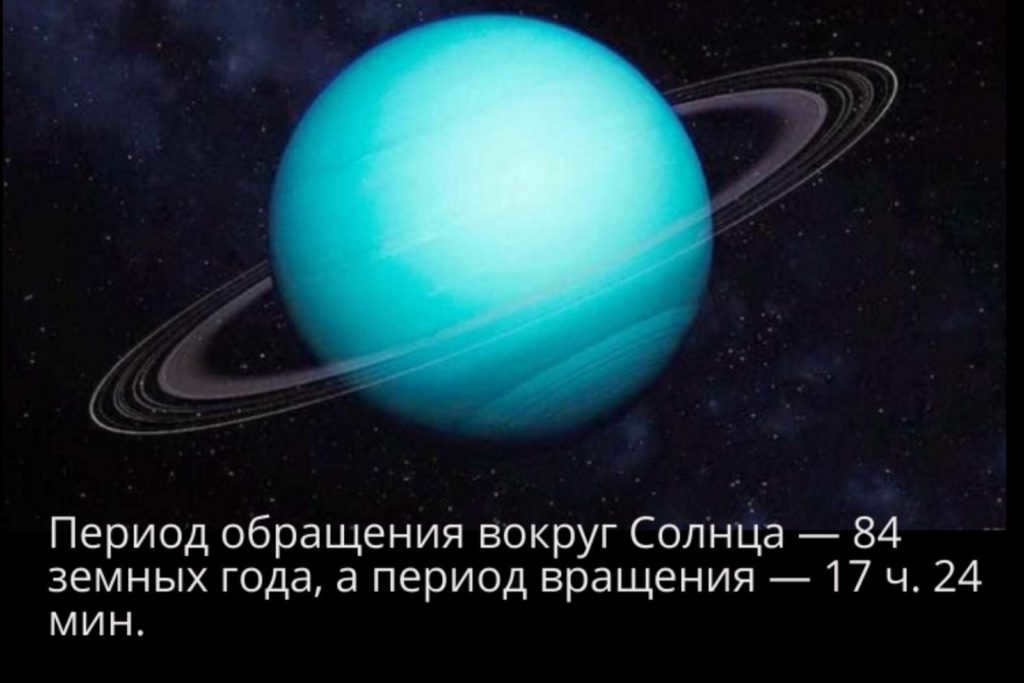
Uranus is the seventh planet in our Solar System, located 2873 million km away from the Sun. It has a mass equivalent to 14.56 times that of Earth and a diameter of 51,118 km. Composed of a mixture of gases and ice, Uranus has a surface temperature of -195 °C. The distinct green-blue appearance of Uranus is due to the presence of frozen methane particles in its atmosphere. In addition to its unique color, Uranus also possesses rings and numerous satellites.
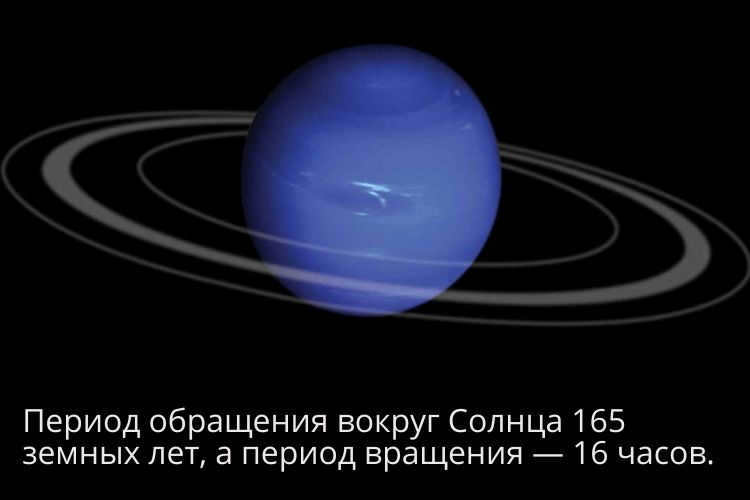
The planet located eighth in order from the Sun, which is approximately 4495 million kilometers away from it. Neptune possesses a mass equivalent to 17.17 times that of the Earth and a diameter measuring 49,528 kilometers. Its surface temperature is a freezing -200 °C. The discovery of Neptune took place in the year 1846 through the use of mathematical calculations. This celestial body is classified as a gas giant and is adorned with a magnificent set of rings as well as an extensive collection of satellites. The rings themselves exhibit a reddish hue and are composed of ice particles that are coated with a layer of organic material.
Fascinating tidbit: The atmosphere of Neptune boasts the most formidable winds in the entire solar system, reaching astonishing speeds of up to 2000 km/h.
Other celestial bodies in the solar system
Small planetary objects
This concept emerged relatively recently, specifically in 2006. The International Astronomical Union classified five celestial bodies as dwarf planets: Pluto, Ceres, Haumea, Eris, and Makemake.
What sets dwarf planets apart from other planets? Their main distinction is that they have bodies of comparable size in close proximity to their orbits.
Fascinating fact: Pluto was considered the ninth planet of the solar system until 2006, while Ceres was categorized as an asteroid.
Asteroids
Asteroids are irregularly-shaped objects that revolve around the Sun. Over 400,000 asteroids have been identified by scientists. The majority of asteroids have a diameter ranging from 100 to 500 meters. The most massive asteroids known to exist are Interamnia, Pallada, Hygeia, and Vesta.
Comets
Comets are celestial bodies that follow highly elongated orbits and undergo changes in appearance as they approach the Sun. When comets are far away from the Sun, they consist of ice, rocks, and dust. As they come closer to the Sun, the ice and dust sublimate, creating a bright shell around the nucleus called the coma. Due to the solar wind and light pressure, the gases and dust are pushed away, resulting in the formation of a tail for the comet.
Meteoroids and meteorites
Meteoroids, also known as meteoric bodies, are compact space objects that produce meteors when they penetrate the Earth’s atmosphere. The majority of these objects disintegrate in the atmosphere, but a few manage to reach the Earth’s surface and are referred to as meteorites.
Stars
Stars are massive celestial bodies composed of luminous gases. Due to their immense distance from our planet, they appear as tiny specks in the sky. Stars vary in size and surface temperature, which affects their appearance. For instance, hot stars appear blue, cold stars appear red, and stars with a moderate temperature appear yellow.
Summary
How many planets are there in the solar system: 8 or 9?
Response: Our solar system consists of 8 planets.
We have endeavored to provide a comprehensive answer to this question, as well as to discuss each planet individually and other celestial bodies within the solar system.
We eagerly anticipate your feedback. Don’t forget to follow us on Yandex.Zen and other social media platforms. ))
The solar system, being one of the most enigmatic regions of the universe, has perplexed scientists for millennia as they sought to understand the intricate orbits of the planets around the Sun. However, a new enigma has emerged: the existence of a ninth planet.
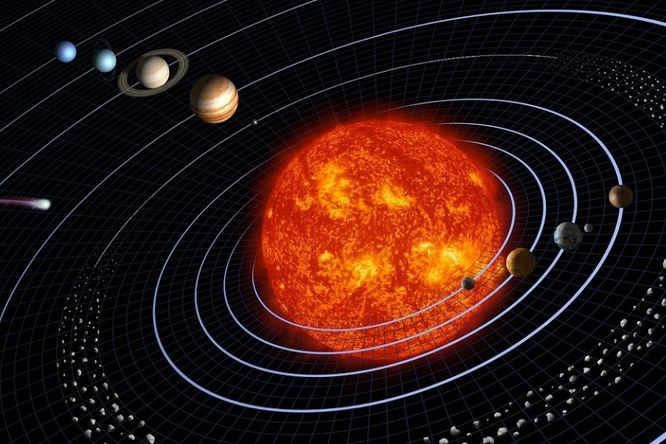
- Mercury;
- Venus;
- Earth;
- Mars;
- Jupiter;
- Saturn;
- Uranus;
- Neptune.
Following the known eight planets, there might be an additional planet waiting to be discovered.
Since 2016, astronomers have been actively searching for a ninth planet within our solar system. Through mathematical calculations, the existence of another celestial body, commonly referred to as “Planet X”, has been suggested. However, let’s begin by discussing the eight planets that are already recognized within our solar system.
How many stars and planets are there in the solar system?
The solar system currently consists of 8 planets and 1 star that these celestial bodies orbit around.
Which planet has been excluded from the Solar System and why?
Previously, it was believed that the Solar System contained eleven planets – Mercury, Venus, Earth, Mars, Jupiter, Saturn, Uranus, Neptune, Pluto, Ceres, and Erid. The discovery of these additional objects raised a debate among the scientific community regarding the criteria for classifying a celestial body as a planet.
A resolution was later passed stating that a celestial object can only be considered a planet if it:
- Orbits the Sun and is not a satellite of another celestial body;
- Has enough mass to form a spherical shape;
- It has the ability to eliminate other celestial bodies from its orbit.
As a consequence, Pluto, Erida, and Ceres were removed from the list of planets in the solar system.
The reality is that although Pluto revolves around the Sun and has a spherical shape, it is incapable of clearing its orbit of other celestial objects. The celestial bodies that orbit Pluto are almost the same mass as the planet itself. Due to this, Pluto is unable to “absorb” them. Because of its size and unique orbit, Pluto has been classified as one of the dwarf planets.
Pluto’s Characteristics
- The ancient Roman god Pluto gave his name to this celestial object;
- It is classified as a dwarf planet;
- The diameter of Pluto is 2376.6 km;
- Its mass is 1.3×10^22 kg, which is 0.0022 times the mass of planet Earth;
- The temperature on Pluto reaches as low as -230 degrees Celsius;
- Pluto is located at an average distance of 7.4 billion kilometers or 39.4 astronomical units from the Sun;
- It orbits the Sun at a velocity of 4.7 kilometers per second;
- The density of Pluto is 2 g/cm3;
- Its polar radius measures 1153 kilometers;
- The surface reflectivity of Pluto is 0.4;
- At its closest point to the Sun, known as perihelion, Pluto is 4.437 billion kilometers or 29.667 astronomical units away;
- At its farthest point from the Sun, known as aphelion, Pluto is 7.376 billion kilometers or 49.31 astronomical units away;
- The average orbital velocity of Pluto is approximately 4.6691 kilometers per second;
What are the planets that are closest and farthest from the Sun?
Mercury is the planet that is closest to the Sun, with a distance of only 58 million kilometers.
Venus is the second closest planet to the Sun, with an average distance of 108 million kilometers.
On the other hand, Neptune is the farthest planet from the Sun, with an average distance of 4.55 billion kilometers.
Uranus is a bit closer, with a distance from the Sun of 2.8 billion kilometers.
What is the number of planets that are located at a greater distance from the Sun than Earth?
The average distance between the Sun and Earth is 149.6 million kilometers.
Following Earth is Mars, which is positioned at a distance of 228 million kilometers from the star. Next in line are Jupiter (778 million kilometers), Saturn (1.43 billion kilometers), Uranus, and Neptune.
A total of five planets are situated farther away from the Sun than Earth.
Mercury, the nearest planet to the Sun in the Solar System
Mercury, one of the least explored planets in the solar system, has only been visited by two Earthly emissaries throughout its history.
Mercury’s Characteristics
- The planet is named after the ancient Roman god of commerce.
- Type: terrestrial planet.
- Radius: 2440 km.
- Mass: 3.3011×10^23 kg.
- Aphelion: 69.8 million km.
- Perihelion: 46 million km.
- Average distance to Earth: 77 million km.
- Surface temperature: -173°C to 427°C.
- Solar day: 176 Earth days.
Due to its proximity to the Sun, Mercury undergoes extreme temperature changes, with daytime temperatures soaring to 450°C, which is hot enough to melt lead. Conversely, at night, the temperature plummets to -180 °C.
Mercury possesses a thin atmosphere comprising oxygen, sodium, hydrogen, helium, and potassium. Moreover, its surface is pockmarked with craters akin to those found on the Moon, as it is impervious to meteorite impacts. Additionally, the northern pole of Mercury harbors water ice and frozen organic compounds.
Venus, the “twin” planet of Earth in our solar system
Unlike the majority of planets in our solar system, Venus has a retrograde rotation, meaning it spins in the opposite direction to its orbital motion.
Venus’ Key Characteristics
- The planet is named after the ancient Roman goddess of beauty and love.
- Type: Venus belongs to the Earth-group of planets.
- Radius: Venus has a radius of 6,051.8 km.
- Mass: Venus has a mass of 4.867×10^24 kg.
- Aphelion: Venus is at a distance of 108.939 million km from the sun at its farthest point in its orbit.
- Perihelion: Venus is at a distance of 107.476 million km from the sun at its closest point in its orbit.
- Average distance to Earth: Venus is typically located between 261 million km and 40 million km away from Earth.
- Surface temperature: Venus experiences extreme heat, with temperatures ranging from 438 °C to 482 °C.
- Solar day: One day on Venus is equivalent to 116.75 Earth days.
Venus, the planet closest to the Sun, is similar in size to Earth. Radar scans have revealed that it is home to a range of mountains and volcanoes. However, Venus’ atmosphere is thick and toxic, composed mainly of sulfuric acid clouds. This creates a strong greenhouse effect, making it the hottest planet in our solar system. The surface temperature on Venus averages a scorching 465 °C.
Earth is the only celestial body within our solar system that sustains life
Among the countless planets and moons in our solar system, Earth stands out as the sole habitat for living organisms due to its unique combination of an oxygen-rich atmosphere, vast oceans of liquid water, and the presence of various forms of biological life.
Distinctive Features of Earth
- The name of our planet is derived from the Roman goddess associated with fertile soil;
- Earth falls into the category of terrestrial planets;
- It has a mass of approximately 5.974-10^24 kilograms;
- The equatorial radius measures about 6378.140 kilometers;
- With a mean radius of 6371.004 kilometers, Earth showcases its spherical shape;
- The orbital period of our planet spans around 365.25 Earth days;
- Earth’s aphelion, the farthest point from the Sun, is located at a distance of 152 million kilometers;
- On the other hand, its perihelion, the closest point to the Sun, is approximately 147 million kilometers away;
- A complete rotation on its axis takes about 23 hours, 56 minutes, and 4.099 seconds.
Mars, also known as the red planet, is one of the celestial bodies in our solar system.
Unique Features of Mars
- The planet was named after Mars, the ancient Roman god of war;
- Mars is classified as a terrestrial planet;
- It has a radius of approximately 3,396 km;
- The mass of Mars is about 6.417 × 10^23 kg;
- Mars has an aphelion distance of 249.2 million km;
- Its perihelion distance is around 206.6 million km;
- The average distance between Mars and Earth is about 225 million km;
- Mars experiences extreme surface temperatures, ranging from -143 °C to 35 °C;
- A Martian day, also known as a solar day, lasts approximately 24 hours, 39 minutes, and 35 seconds.
Mars is a frigid and arid planet resembling a desert, covered in a layer of fine dust. This dust is primarily composed of iron oxides, which give Mars its distinct red appearance. Despite its harsh conditions, Mars shares some similarities with Earth, such as its rocky terrain, presence of mountains, valleys, and canyons, and the occurrence of various storm systems, ranging from localized tornado-like dust storms to planet-wide dust storms.
Below the Martian surface lie vast deposits of water ice, spanning an area equivalent to the size of California. Additionally, the planet’s poles are adorned with ice caps composed partially of frozen water. In a remarkable discovery made in July 2018, researchers announced the identification of a liquid lake concealed beneath the icy surface of the southern polar ice cap. This groundbreaking finding marks the first instance of a lasting reservoir of water on Mars.
Jupiter, the largest planet in the solar system
The largest atmospheric vortex in the solar system can be found on Jupiter, known as the Great Red Spot. While it is currently decreasing in size, it was once as large as the Earth a century ago.
Key Features of Jupiter
- Jupiter is named after the ancient Roman god of thunder;
- It is classified as a gas giant;
- With a radius of 69,911 km;
- Having a mass of 1.8982×10^27 kg;
- Its aphelion is 817 million km;
- Its perihelion is 741 million km;
- The mean distance to Earth is 778 million km;
- It has a surface temperature of -145 ℃;
- A solar day on Jupiter lasts 9 hours, 55 minutes, and 33 seconds.
Jupiter holds the title of being the largest planet in the solar system. As per NASA’s calculations, it surpasses the combined size of all other planets by more than two times. The vibrant hues of its clouds are a result of the diverse gases present. The most prominent characteristic of its clouds is the Great Red Spot, an enormous storm spanning over 16,000 kilometers. This tempest has been raging with a velocity exceeding 178 m/s for the past 150 years.
Saturn, the gas giant planet in our solar system
Unique Characteristics of Saturn
- The planet derives its name from the Roman god of agriculture;
- classified as a gas giant;
- has a radius of 58,232 km;
- possesses a mass of 5.6834×10^26 kg;
- aphelion is situated at 1.51 billion km;
- perihelion is at a distance of 1.35 billion km;
- average distance from Earth is approximately 1.4 billion km;
- surface temperature ranges from -185 °C to -122 °C;
- a solar day on Saturn lasts for 10 hours and 32 minutes.
Saturn, the sixth planet from the sun, is most renowned for its extraordinary rings. In the early 1600s, the renowned scientist Galileo Galilei initially observed Saturn and mistakenly believed it to be a three-part celestial body: a planet with two large moons on either side. However, forty years later, Christiaan Huygens proposed the hypothesis that they were in fact rings encircling the planet.
The composition of the rings of Uranus is a combination of ice and rock, but their exact formation remains a mystery to scientists. This gaseous planet is primarily composed of hydrogen and helium and is also accompanied by numerous satellites.
Uranus: The Coldest Planet in Our Solar System
Key Characteristics of Uranus
- The planet takes its name from the Greek god of the sky.
- Uranus is classified as an ice giant.
- Its radius measures approximately 25,362 km.
- The planet has a mass of 8.681 × 10^25 kg.
- Uranus reaches an aphelion distance of 3 billion km.
- Its perihelion distance is approximately 2.5 billion km.
- The average distance from Uranus to Earth is about 2.9 billion km.
- Surface temperatures on Uranus range from -224 °C to -216 °C.
- A solar day on Uranus lasts for 17 hours, 14 minutes, and 23 seconds.
Uranus, the seventh planet from the sun, features clouds of hydrogen sulfide, the same chemical responsible for the foul smell of rotten eggs.
According to astronomers, Uranus experienced a collision with an object approximately two times the size of Earth around 4 billion years ago, which resulted in a significant tilt of the planet. This tilted position gives rise to long-lasting extreme seasons lasting over 20 years, and it is possible for one pole of Uranus to go without direct sunlight for up to 84 Earth years. Furthermore, this collision is believed to have led to the formation of rocks and ice that now exist in Uranus’ orbit, eventually becoming some of the planet’s 27 satellites.
Neptune, the most distant planet from the Sun in our solar system
Facts about Neptune
- This celestial body is named after the Greek god of the sky;
- It belongs to the category of ice giants;
- Its radius measures 25,362 kilometers;
- The mass of Neptune is approximately 8.681 × 10^25 kilograms;
- Neptune’s aphelion, or the point in its orbit farthest from the Sun, is situated at a distance of 3 billion kilometers;
- On the other hand, the perihelion, or the point in its orbit closest to the Sun, is about 2.5 billion kilometers away;
- The average distance between Neptune and Earth is estimated to be around 2.9 billion kilometers;
- The surface of Neptune experiences temperatures ranging from -224 °C to -216 °C;
- A solar day on Neptune lasts approximately 17 hours, 14 minutes, and 23 seconds.
Neptune, which shares a similar size with Uranus, is renowned for its powerful supersonic winds and frigid temperatures. It holds the distinction of being the first planet whose presence was mathematically predicted before its actual visual observation. The peculiarities in the orbit of Uranus led French astronomer Alexis Bouvard to hypothesize the existence of another celestial body exerting a gravitational force.
The enigmatic ninth planet
In 2016, experts proposed the potential presence of an additional celestial body, currently referred to as “planet X.” It boasts a mass approximately ten times that of Earth and orbits the Sun at a distance 300-1000 times greater than our planet.
The existence of this planet has been deduced by scientists based on its gravitational impact on other entities within the Kuiper Belt, a region situated at the outer edges of our solar system that is populated by icy rocks left over from the formation of our solar system. These rocks, also known as trans-Neptunian objects, exhibit highly elliptical or oval-shaped orbits that are aligned in the same direction.
According to a hypothesis put forward in September 2019, there is a suggestion that “planet X” might not actually be a planet at all. Researchers from Durham University and the University of Illinois have proposed that it could be a primordial black hole that originated shortly after the Big Bang and was subsequently captured by our solar system, as reported by Newsweek. However, detailed information is not yet accessible.
Other celestial bodies in the solar system
Dwarf planets
An in-between classification that falls between planets and asteroids, dwarf planets are celestial objects that have a relatively small mass and are shaped like a sphere as they orbit around the Sun.
At present, there are five identified dwarf planets in our solar system – Haumea, Makemake, Erida, Ceres, and Pluto.
Asteroids
Asteroids are celestial bodies that orbit around the Sun and are irregular in shape. Unlike planets, asteroids do not have an atmosphere. They are composed of a mixture of iron, nickel, and various rocky materials. The majority of asteroids in our Solar System can be found between the orbits of Mars and Jupiter. Currently, there are approximately 670,000 known asteroids in our solar system, and some of them pose a potential threat to Earth.
There are specific asteroids whose orbits bring them dangerously close to our planet, often referred to as “near-Earth asteroids”. Examples of such near-Earth asteroids include asteroid 2004 VD17, Apophis, and asteroid 1950 DA. However, experts at NASA assure us that there is no need to panic. The likelihood of a known potentially dangerous asteroid colliding with Earth within the next 100 years is extremely low, estimated to be less than 0.01%.
Comets
Comets are celestial objects found in the Solar System. They consist of ice mixed with dust and rocky fragments. When they come closer to the Sun, the ice starts to heat up and transform into gas. This process produces a trail of dust and gases that trails behind the comet. Some of the well-known comets that have passed through our solar system include Halley, Arenda-Roland, Lexel, and Ikea-Seki.
Objects of compact material that weigh less than one kilogram. When they travel through the atmosphere, they become hot and disintegrate. Starfall, a phenomenon that is frequently visible in the summer sky, is a dense stream of meteors. It happens during a specific period of time when the Earth crosses the point where its own orbit intersects with the path of the meteor shower.
Meteorites
Meteorites are solid objects made of iron or stone that originate from outer space and land on the surface of a planet. They are believed to come from interplanetary space.
Star
A star is a massive celestial body composed of gas and plasma. It emits light and heat due to a thermonuclear reaction that occurs within it. Stars are luminous cosmic objects that shine brightly in the night sky.
TechInsider Network Edition
Founder of "Fashion Press" LLC: 119435, Moscow, Bolshoi Savvinsky per. 12, building 6, 3rd floor, room II;
Address of the editorial office: 119435, Moscow, Bolshoi Savvinsky per. 12, building 6, 6th floor, room II; Editorial office address: 119435, Moscow, Bolshoi Savvinsky per. 6, 3rd floor, room II;
Chief Editor: Nikita Vasilenok
Email address of the editorial office: [email protected]
Phone number of the editorial office: +7 (495) 252-09-99
Information product label: 16+
The network edition is registered by the Federal Service for Supervision in the Sphere of Communications, Information Technologies and Mass Media, registration number and date of decision on registration: series EL No. FS 77 – 84123 dated November 09, 2022.
© 2007 – 2023 “Fashion Press” Ltd.
By contributing content to the Website, the User hereby grants “Fashion Press” LLC non-exclusive rights to utilize, reproduce, distribute, create derivative works, and publicly showcase the contributed materials.
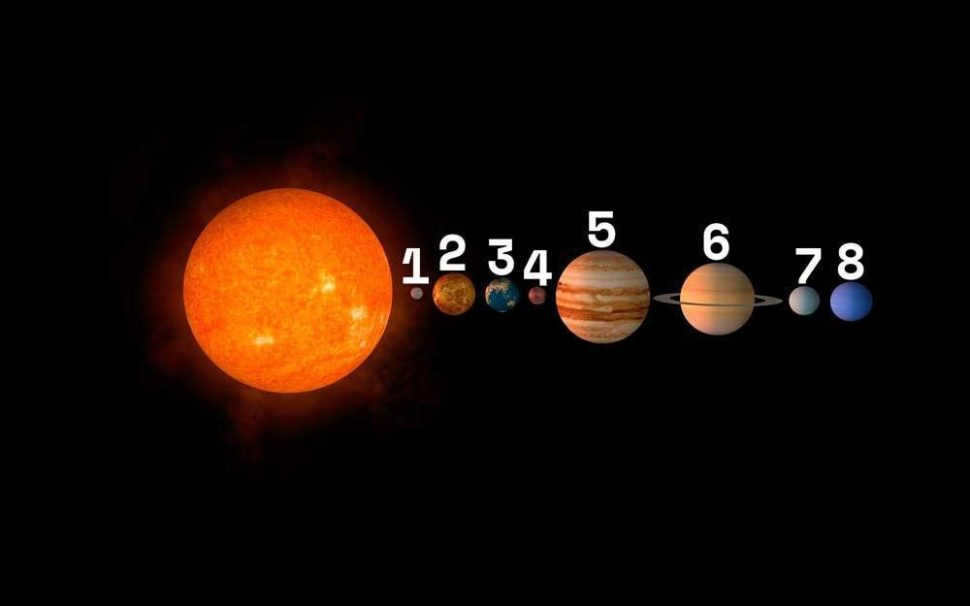
Currently, there are 8 known planets that revolve around the Sun, although an increasing number of scientists are suggesting that there could be even more. Starting from the 1980s, astronomers have been uncovering exoplanets, which are planets that orbit stars located far away. Some of these exoplanets are situated at a distance of 27,000 light-years from the Sun, whereas the estimated radius of our solar system is merely 1 light-year. Despite these discoveries, scientists still struggle to provide an exact count of the planets that orbit our star! So, what makes it so challenging to determine the precise number of planets in our solar system?
The Earth Group of Planets
The 4 planets nearest to the Sun are the terrestrial planets, as they bear a resemblance to Earth.
Mercury
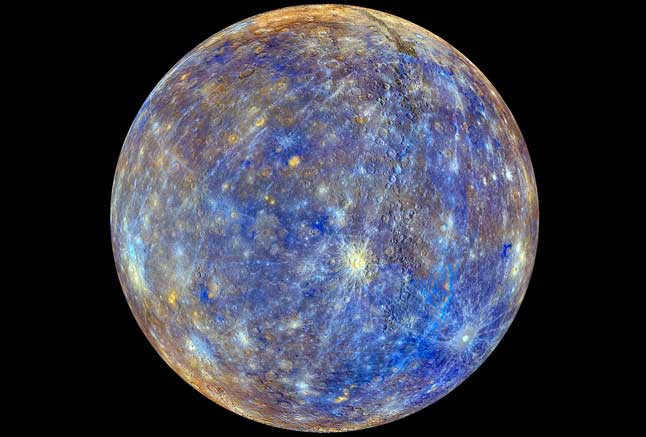
Mercury is the planet that is closest to the Sun. It completes one orbit around the Sun in just 88 days, with its radius varying between 46 and 58 million kilometers. Interestingly, for every two orbits around the Sun, Mercury completes exactly three rotations around its own axis. Mercury is the smallest planet known in the entire solar system, with a radius of only 2439.7 km. In fact, some of its moons, such as Ganymede and Titan, are larger than Mercury.
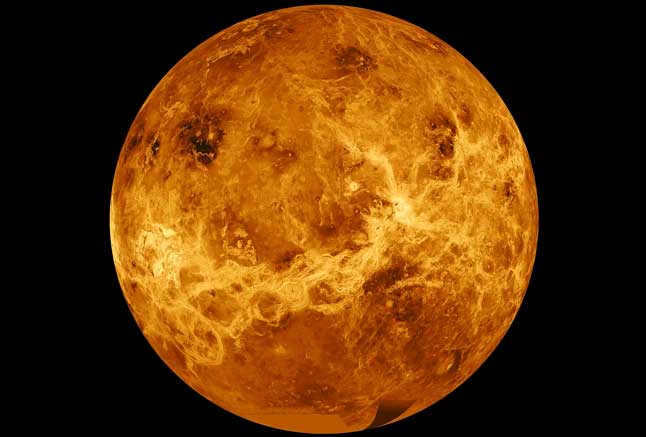
Venus revolves around the Sun at a distance of 108 million kilometers. It holds the record for being the hottest planet in our solar system, with temperatures reaching up to 464° Celsius. This extreme heat can be attributed not only to its proximity to the Sun, but also to its atmosphere, which is primarily composed of 96.5% carbon dioxide. This dense atmosphere creates a strong greenhouse effect, trapping heat and contributing to the planet’s scorching temperatures. Additionally, Venus is quite similar to Earth in terms of size, with a radius measuring approximately 6052 km.
Planet Earth
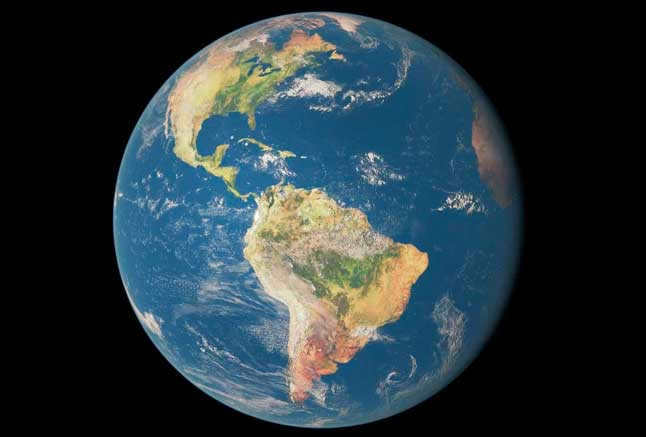
When the Earth orbits the Sun, it is positioned at a distance of 147-152 million kilometers. This specific distance allows for the existence of liquid water on our planet, which is essential for supporting life. Scientists refer to the average distance, which is 149.6 million kilometers, as 1 astronomical unit (1 a.u.). What sets Earth apart from the other terrestrial planets is the presence of its massive natural satellite, known as the Moon.
Red Planet
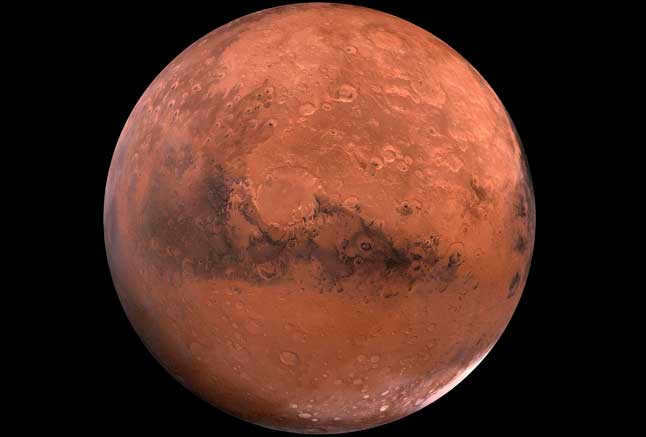
The gap between the celestial body and Mars ranges from 207 to 249 million kilometers. The crimson planet has a radius of 3389 kilometers. Its atmosphere is exceedingly sparse, although there are polar ice caps. It possesses two moons (Phobos and Deimos) that are significantly smaller than the Moon.
Gas giants
Gas giants contrast with Earth-like planets in that they lack a solid surface. The majority of their composition is comprised of atmosphere, which thickens and transitions into a liquid state as it approaches the planet’s core, with no clear demarcation between the ocean and the atmosphere.
Jupiter
The largest planet in our solar system, Jupiter is known for its massive size and swirling clouds. It is a gas giant, composed mostly of hydrogen and helium. Jupiter has a strong magnetic field and many moons, including the four large Galilean moons: Io, Europa, Ganymede, and Callisto. It is often referred to as the “king of the planets” because of its size and influence. Jupiter’s iconic feature is the Great Red Spot, a massive storm that has been raging for centuries. Scientists believe that Jupiter plays a crucial role in shaping the solar system and protecting Earth from potential asteroid impacts.
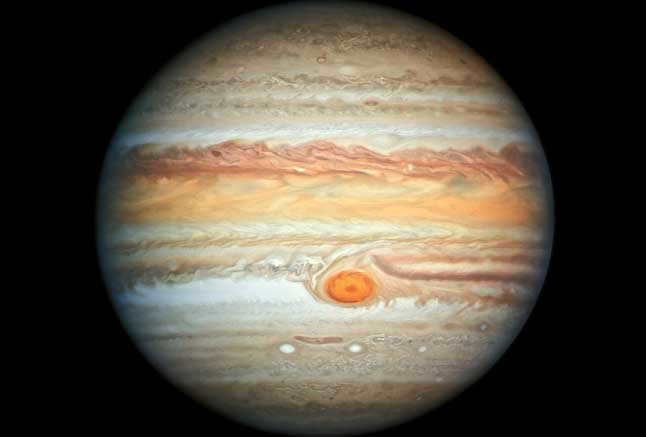
Jupiter, which has a radius of 69911 km, holds the title of the largest planet in our solar system. In fact, its mass is a whopping 318 times greater than that of Earth! Jupiter is also home to a multitude of satellites that orbit around it. The distance between this giant planet and the Sun can range anywhere from 741 to 817 million kilometers.
Saturn
Saturn is the sixth planet from the Sun and the second-largest in the Solar System, after Jupiter. It is a gas giant with an average radius about nine times that of Earth.
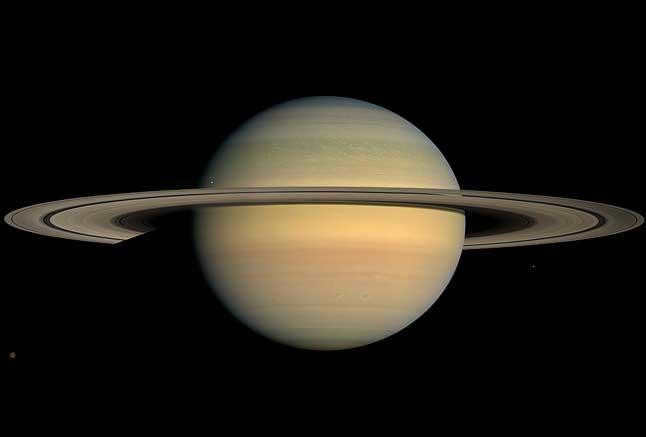
At a distance of 1.354-1.429 billion km from the star lies Saturn, which has an estimated radius of 58232 km. It is renowned for its distinctive rings, although similar rings can also be found around other gas giants, albeit less prominently. The number of satellites discovered around Saturn is nearing one hundred and continues to grow. Among the planets visible to ancient astronomers, Saturn is the farthest planet in our solar system. During that time, it was believed that there were a total of seven planets (mistakenly including the Sun and the Moon as planets, while excluding the Earth itself).
Uranus
Rephrase the text, making it unique, using the English language and preserving the HTML markup:
Uranus
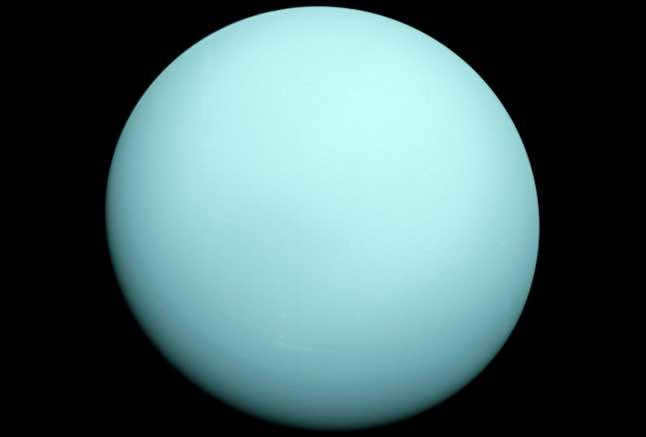

The planet Uranus was first discovered in the year 1781. It has a radius of approximately 25,362 kilometers, and its distance from the Sun can range from 2.749 billion kilometers to 3.004 billion kilometers. One interesting fact about Uranus is that its axis of rotation is almost parallel to the plane of its orbit. As a result, each of its poles experiences continuous sunlight for a period of 42 years, followed by 42 years of darkness.
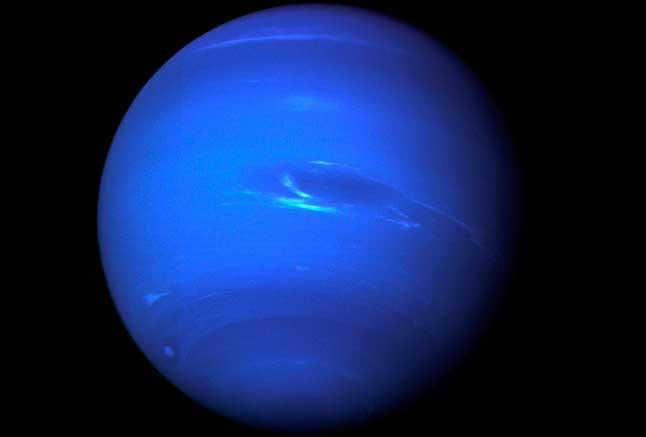
The discovery of Neptune, the eighth planet in our solar system, took place in 1846. It is situated at a distance of 4.453-4.554 billion kilometers (29.8-30.4 a.u.) from the center of its star. What sets Neptune apart is its radius, which measures 24622 kilometers. It is interesting to note that the existence of Neptune was initially hypothesized based on unusual irregularities in the orbit of Uranus, and only later confirmed through telescopic observations.
Does the ninth planet exist?
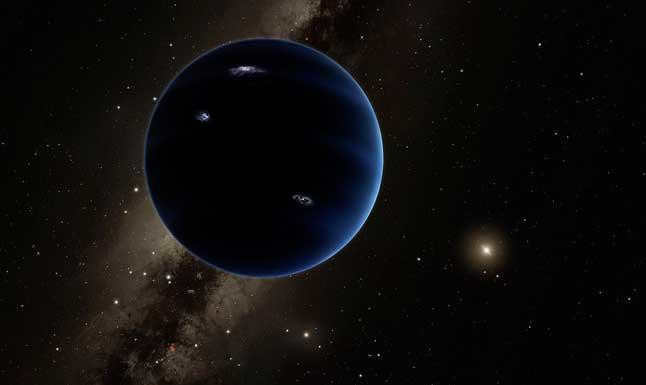
For quite some time, it seemed that there were no other gas giants present in our solar system. However, various models depicting the evolution of our system indicate the existence of a fifth gas giant, which might have either been pushed into an extremely distant orbit or permanently exited the solar system. Astronomers are also puzzled by the tilt of the Sun’s axis of rotation (which exceeds 7 degrees) and the anomalies in the orbits of numerous asteroids located beyond Neptune in the Kuiper belt. Hence, there is a hypothesis that there might be another planet, referred to as the Ninth Planet.
Estimates suggest that its radius is 2-4 times larger than Earth’s, and its orbit is a highly elongated ellipse, resulting in the distance between the planet and the Sun ranging from 200 to 1200 astronomical units. This theoretical planet takes anywhere from 10,000 to 20,000 years to complete one orbit around the Sun! Confirming the existence of this planet is extremely challenging due to its vast distance from Earth (10-100 times farther than Neptune), slow movement across the sky, faint appearance (as it receives very little sunlight), and the inability to accurately determine its current position within its orbit.
What is the total number of dwarf planets in our solar system?
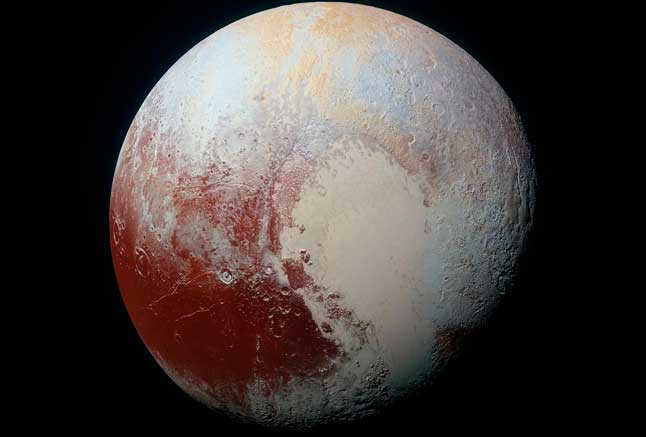
A lot of individuals are aware that in the past, Pluto was classified as a planet, but subsequently, it was reclassified as a dwarf planet. So, what precisely are dwarf planets and how many of them exist?
Pluto was first identified in 1930, but as scientists delved deeper into its composition, their estimates of its mass gradually decreased. Presently, it is believed to be 500 times less massive than Earth. In the early 21st century, a multitude of other celestial objects were discovered in close proximity to Pluto’s orbit, with some being comparable in size to Pluto itself. However, the orbits of all other planets remain largely devoid of such sizable bodies. Consequently, in 2006, a new classification was introduced – that of a dwarf planet. This designation distinguishes it from typical planets, as dwarf planets are unable to gravitationally clear their orbits of other substantial objects. Pluto, along with Ceres, Haumea, Makemake, and Eris, was granted the status of a dwarf planet.
However, there are numerous other celestial bodies that lie beyond the orbit of Neptune and have the potential to be classified as dwarf planets. However, they have not yet been officially recognized as such. One particularly fascinating example is Sedna, whose farthest point in its orbit (aphelion) is located over 1000 astronomical units away from the Sun! Furthermore, new trans-Neptunian objects are constantly being discovered. According to Michael Brown, a prominent astronomer, it is possible that there are 260 dwarf planets in the Kuiper belt alone, and in the more distant regions of the solar system, there could be up to 10,000 dwarf planets.
List of sources used





